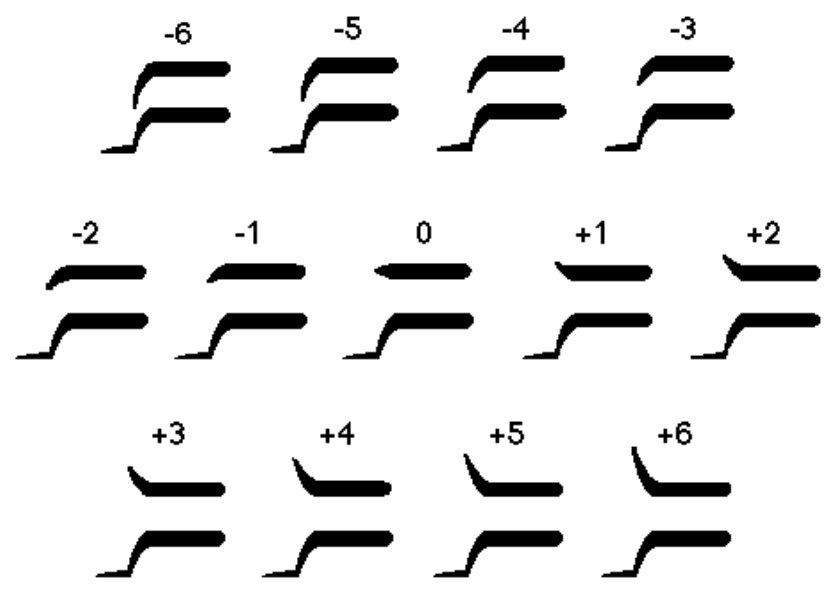Pattern Playback: “bdg” continuum
Play one of the audio files, below, to hear the sound generated by the Pattern Playback based on the formant pattern corresponding to the picture, above, or listen to the entire continuum.
The details . . .
This page demonstrates a consonant-vowel syllable continuum that starts with the sound “bae”, moves through “dae” and ends up at “gae”. Each numbered section of the figure at the top contains a picture of a “syllable” pattern where the horizontal axis represents time, the vertical axis represents frequency, and darkness corresponds to energy. These syllables were produced using the Pattern Playback by hand-painting each of the carefully controlled patterns. Note that in this example each syllable consists of two dark bands of energy. These energy bands are called formants. The horizontal, steady-state portions correspond to the vowel -- in this case, “ae”. The frequency transitions at the beginning of each syllable determine the consonant quality. In this continuum, the lower band of energy (the first formant) is the same for each syllable. The only thing that is changing is the second formant transition. At the beginning of the continuum ( “bae”, step -6) the second formant starts much lower in frequency than the steady-state vowel portion. By the middle of the continuum (step 0, “dae”), there is no transition -- the second formant is flat. At the end of the continuum (step 6, “gae”), the second formant transition starts much higher in frequency than the steady-state vowel portion.
This continuum consists of 13 items. The onset of the second formant transition is varied in equal frequency steps. The Pattern Playback provided an experimental tool that for the first time let researchers systematically control the important acoustic information in speech signals. In turn, these researchers could then also evaluate the perceptual consequences of these careful acoustic manipulations. In the example presented here we can see the importance of the second formant transition in determining the consonant identity.
< Pattern Playback >